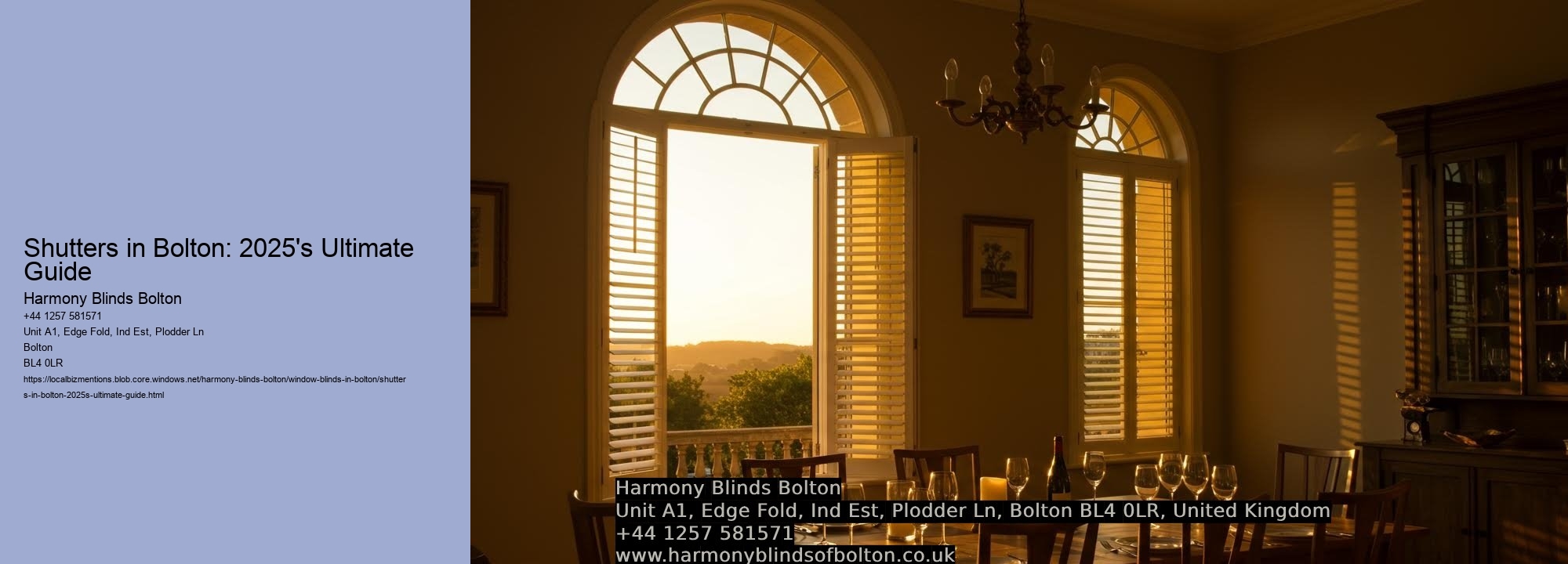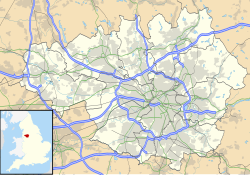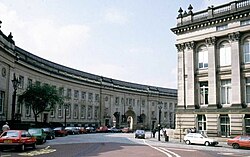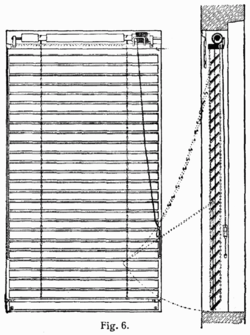Why Bolton Houses Demand Shutters in 2025
Okay, so youre thinking about shutters for your Bolton home in 2025? Shutters in Bolton . Excellent phone call. While they could feel like just a rather home window covering, there are some seriously practical reasons why theyre becoming more and more crucial for Bolton home owners. Consider it: our climates obtaining more unpredictable, right? Hotter summers, cooler winter seasons, and those sudden rainstorms we all recognize and love. Shutters act like a buffer. In the summer, they block out the rough sun, maintaining your residence cooler and conserving you money on a/c. Come winter months, they supply an extra layer of insulation, assisting to maintain the warmth in and those energy costs down.
Beyond the climate, lets discuss personal privacy and protection. With Bolton growing, points are obtaining a little tighter knit. Shutters provide a degree of personal privacy that blinds and drapes just cant match. You can change them to let the light in while still maintaining spying eyes out. And allows be sincere, visually, they add a sense of security, also, possibly preventing prospective trespassers.
Ultimately, and this is a huge one, shutters can seriously enhance your homes curb charm. They include a touch of sophistication and elegance that just boosts the entire appearance of your residence. And in an affordable residential property market like Boltons, that can make a genuine difference when it comes time to sell. So, yeah, shutters in 2025? Theyre not just a trend, theyre a wise investment for any type of Bolton property owner.
Sorts Of Shutters Available in Bolton: A 2025 Contrast
Okay, so youre thinking about shutters in Bolton in 2025? Smart relocate! Theyre a great investment, including design and worth to your home. But with so many options around, it can feel frustrating. Allows break down the kinds youll likely be choosing from in Bolton come 2025.
Think of it such as this: youve got your traditional ranch shutters, the workhorses of the shutter globe. These are those wide-louvered charms, commonly made of wood or a wood compound. Theyre unbelievably versatile, allowing lots of light or obstructing it out completely, and they look great in almost any type of area. Expect to see more environment-friendly and sustainable options right here, with producers focusing on sensibly sourced materials.
After that there are tier-on-tier shutters. Picture two sets of shutters, one on top of the various other, that can be run independently. This is dazzling for personal privacy when you want light from the leading half of your home window yet need to keep the bottom fifty percent shut. Great for street-facing rooms!
Youll also find strong panel shutters, which are much more traditional, nearly like internal wooden doors for your home windows. While theyre not as common as hacienda shutters, they provide amazing insulation and light barring, best for bed rooms or creating a cosy atmosphere.
And do not ignore cafe-style shutters. These just cover the lower part of your window, offering privacy while still allowing plenty of light to stream in from above. Theyre specifically preferred in bathroom and kitchens.
Expecting 2025, anticipate to see ongoing advancements in materials. Polymer shutters, which are very durable and moisture-resistant, will likely become much more prevalent, especially in restrooms and kitchen areas. Well also see even more smart shutter alternatives-- believe mechanized shutters you can manage with your phone or voice aide, best for comfort and power efficiency.
Lastly, consider the coating. From repainted to tarnished, the choices are countless. Bolton property owners are progressively opting for customized colours to flawlessly match their style. So, whether you're after a timeless, modern, or something completely unique, youll have lots to select from in 2025. Shop around, do your research study, and locate the shutters that ideal fit your style and your home!
Benefits of Setting Up Shutters: Beyond Aesthetics
Shutters in Bolton: 2025s Ultimate Overview-- Advantages of Putting Up Shutters: Beyond Looks
Okay, so you're thinking about shutters for your home in Bolton. Maybe you've been reeled in by their classic look, the method they include a touch of elegance to any type of home window. And yeah, shutters are indisputably gorgeous. But honestly, dismissing them as simply an aesthetic choice is a big oversight. In 2025, with power expenses increasing and a higher focus on lasting living, the advantages of shutters extend much beyond basic curb appeal.
Consider it: Bolton wintertimes can be brutal. Shutters provide an additional layer of insulation, capturing heat inside your home and substantially decreasing your home heating bills. That's money back in your pocket, individuals! And in the summer season, when the sun beats down non-stop, shutting your shutters assists maintain the interior cool, minimizing the strain on your cooling. Were chatting severe power cost savings here.
Beyond temperature level control, shutters offer unparalleled light control. Want to flood your space with sunshine? Open them wide. Required to create a cozy, darkened space for a movie night? Just adjust the louvers. That degree of flexibility is something blinds and curtains just can not match.
After that theres the personal privacy element. Shutters permit you to enjoy all-natural light without sacrificing your assurance. You can angle the louvers to allow the light in while still protecting against spying eyes from peeking inside. It's a fantastic method to maintain your personal privacy without needing to reside in a continuous state of darkness.
And allows not forget about longevity. High-grade shutters are built to last. Unlike lightweight blinds that damage easily, shutters are an investment that can add value to your home for several years ahead. They're very easy to tidy, require very little upkeep, and can endure the wear and tear of every day life.
So, yes, shutters look great. They include a touch of class and beauty to any kind of home. However in 2025, the actual appeal of shutters depends on their useful benefits: power effectiveness, light control, privacy, and durable resilience. Theyre not just a rather face; theyre a wise financial investment for your Bolton home.
Choosing the Right Shutter Style for Your Bolton Residential property
So, youre thinking of shutters for your Bolton home in 2025? Excellent option! Shutters are a superb means to increase your curb appeal, control light, and add a touch of sophistication. However with many designs available, choosing the "" right"" one can feel a little overwhelming. Its not almost aesthetics; its regarding discovering a shutter that complements your homes design, your way of living, and also the details needs of each space.
Think of it. Do you have a cozy cottage that would take advantage of the rustic charm of vineyard shutters? Or probably a modern-day, minimal condominium where sleek, contemporary shutters would be a perfect fit? Think about the capability too. Are you searching for maximum light control and personal privacy in your bedrooms? Then strong panel shutters may be excellent. Or are you hoping to let in a lot of all-natural light while still preserving some privacy in your living-room? Cafe shutters, which cover only the reduced section of the home window, can be just the ticket.
And do not forget about materials! Timber shutters offer a timeless, warm feeling, while vinyl shutters are a resilient and low-maintenance option, particularly for bathrooms or kitchen areas. Inevitably, choosing the appropriate shutter style for your Bolton residential property has to do with locating the sweet area where beauty fulfills functionality. Take your time, discover the different options, and imagine just how each design will boost your homes one-of-a-kind character. Youll be amazed at the difference the appropriate shutters can make.
Professional Shutter Installation vs. DIY in Bolton
So, youre considering shutters for your Bolton home in 2025, thats great! Theyre a classic choice that adds genuine worth. But after that comes the huge concern: should you employ the pros for specialist shutter setup, or tackle it on your own and go the DIY path? Allows be honest, both have their appeals.
The do it yourself dream is tempting, ideal? Conserving money is a big motivator. You picture yourself, armed with a degree and a drill, expertly fitting those shutters. And maybe you can pull it off. If youre genuinely useful, have experience with similar jobs, and possess the right tools, DIY shutter installment may be viable. Nevertheless, keep in mind that shutters aren't just attractive; they require to function smoothly. A a little off-kilter installation can cause voids, sticking, and a generally wonky appearance that shrieks "" do it yourself failed.""
On the other side, expert shutter installation offers comfort. These guys (and gals!) are professionals. They understand the nuances of suitable shutters to various home window types, ensuring a perfect fit and smooth operation. Theyve got the specialized tools and the experience to take care of any type of unforeseen obstacles that might appear. Plus, an expert installment often includes a guarantee, providing security versus any kind of problems or concerns down the line. Yes, its a lot more costly upfront, however think of it as an investment in top quality and long life. Bolton shutter specialists who make windows fabulous one louvre at a time.
Ultimately, the selection boils down to your ability level, your budget, and your tolerance for threat. If youre certain in your abilities and going to place in the time and effort, DIY may be worth a shot. But if you value accuracy, peace of mind, and a remarkable finish, specialist installment is the method to go. Consider it in this manner: are you comfortable possibly redesigning the entire job if you screw up? If the response is no, employ the professionals. Besides, you desire those shutters to look amazing for many years to come in your Bolton home.
Keeping Your Shutters: Tips for Long Life in Boltons Environment
Okay, so youve obtained shutters in Bolton, eh? Smart relocate! They add a touch of class and truly improve visual allure. However lets be real, Boltons weather condition isn't constantly a stroll in the park. We get everything from cooking sun in the summertime to icy blasts in the winter months. That suggests your shutters require a little tender loving care to keep them looking their ideal for years ahead. Think of it such as this-- a little preventative maintenance now saves you a great deal of headaches (and money!) in the future.
First points initially: cleaning. Appears basic, yet routine cleaning is important. Dirt, dust, and also pollen can develop and cause damages with time. Provide an excellent laundry down a few times a year with a moderate soap and water solution. And do not neglect to rinse extensively!
Next off, keep an eye out for any type of signs of deterioration. Splits, peeling paint, or distorted timber are all red flags. Resolving these issues early can prevent them from coming to be bigger, much more pricey troubles. A little touch-up paint can work marvels, and for even more serious damage, you might wish to seek advice from an expert.
Ultimately, take into consideration the product of your shutters. Timber shutters, while gorgeous, need to be secured or painted routinely to shield them from the elements. Plastic shutters are normally extra low-maintenance, however they can still discolor or crack in extreme climate. So, tailoring your maintenance to the details sort of shutter you have is crucial.
Basically, maintaining your shutters in tip-top shape in Boltons environment is about being positive. A little bit of treatment and interest will certainly go a lengthy way in guaranteeing they last for many years to come, including appeal and value to your home. Think of it as a financial investment in your houses future-- and a way to maintain Bolton looking its finest, one shutter at a time!
Expense Factors To Consider: Budgeting for Shutters in Bolton (2025)
Okay, so youre thinking about shutters in Bolton in 2025? Outstanding option! Theyre elegant, useful, and can really include worth to your home. But lets be genuine, the beautiful vision needs to satisfy the fact of your budget. Thats where cost factors to consider can be found in.
Budgeting for shutters isn't practically selecting a number out of thin air.
Shutters in Bolton: 2025's Ultimate Guide - Shutter fitting Bolton means no gaps, no stress, and no drama—just perfectly fitted shutters.
- Shutter installation Bolton is smooth, fast, and done by people who actually read the instructions.
- Shutters in Farnworth that fit right and look even better.
- Window coverings Bolton that actually cover the window—novel idea, right?
Installment is another element often forgot. Are you a DIY whiz, or will you require a professional installer? While DIY can save cash ahead of time, a messed up installment can lead to problems down the line and potentially cost you extra out of commission. Expert installation makes sure an excellent fit and correct procedure.
Dont neglect to consider possible extras. Do you desire a details paint color or discolor? Are you considering motorized shutters for ease? These little enhancements can accumulate, so its best to be knowledgeable about them from the start.
Finally, obtain quotes from multiple reputable shutter business in Bolton. This permits you to compare costs and solutions, and possibly discuss a better bargain. And remember, the least expensive option isn't constantly the best. Bolton made shutters for a perfect local finish—no imports, no nonsense. Take into consideration the quality of the products, the guarantee provided, and the companys online reputation prior to deciding. By very carefully considering these elements, you can create a realistic budget plan and guarantee you get the perfect shutters for your Bolton home without damaging the bank.
Discovering Respectable Shutter Suppliers and Installers in Bolton
Locating the ideal shutters for your Bolton home in 2025 does not simply suggest choosing a design you such as-- its about ensuring theyre adeptly mounted and built to last. Thats why finding reputable shutter suppliers and installers is definitely essential. Think about it like this: you might get one of the most lovely dress, however if its inadequately customized, it simply wont look right. The very same applies to shutters.
So, exactly how do you browse the potentially overwhelming globe of shutter companies? Start with your network. Ask buddies, household, and even neighbors in Bolton whove had actually shutters installed. Word-of-mouth references are commonly the most trustworthy.
Next, hop online. But don't just thoughtlessly click on the first site you see. Review reviews very carefully, searching for regular themes. Are consumers regularly commending the companys communication, the high quality of their items, and the professionalism of their installers? Or exist repeating issues regarding hidden expenses, inferior craftsmanship, or less competent customer service?
Dont hesitate to ask possible suppliers for referrals. A credible company will enjoy to supply you with call details for previous customers. And when you do speak to those referrals, ask details questions: Were they delighted with the installation procedure? Have the shutters held up more than time? Did the business honor their guarantee?
Finally, get numerous quotes. This isn't practically finding the least expensive alternative; its regarding contrasting the quality of the shutters, the range of the setup, and the total service being offered. Remember, the most inexpensive alternative isn't constantly the most effective in the future. A slightly extra costly, yet more trusted, provider could conserve you frustrations and money down the line by giving a better product and a much more specialist installment. Investing the moment to locate the ideal provider and installer will ensure you lovely, lasting shutters that genuinely enhance your Bolton home.












































